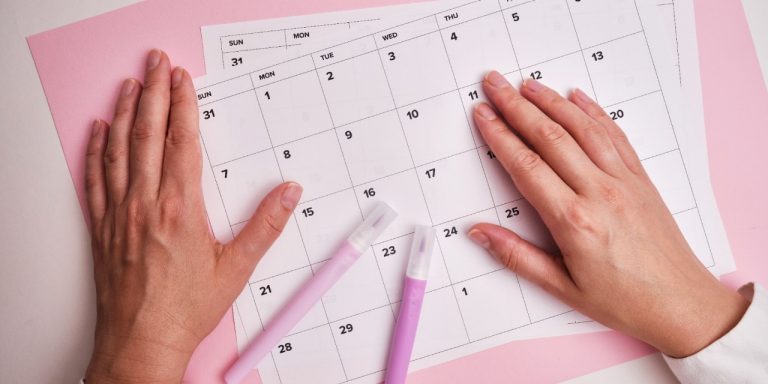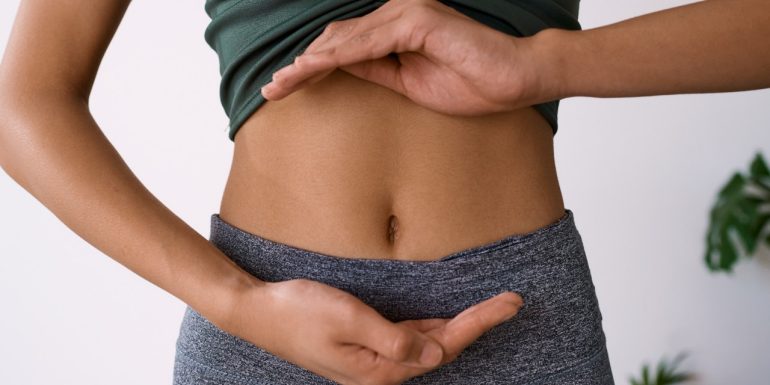
Understanding ovulation: process, timing and symptoms
Ovulation is an important part of the menstrual cycle, and it’s crucial for fertility. But when exactly does ovulation occur, what are the signs and how can ovulation be calculated? Get the answers to all these questions and more here.
What is ovulation and how does it work?
Ovulation is when a mature egg leaves the ovaries and travels through the fallopian tube into the womb. If the egg is fertilised in the fallopian tube by a sperm cell, it will then ideally implant in the womb. It’s at this point that pregnancy begins.
When does ovulation occur?
Ovulation occurs once during each menstrual cycle. In a 28-day cycle, it will normally occur on the 14th day. Exactly when ovulation begins can vary from woman to woman and cycle to cycle, depending on your hormonal status and cycle length. Medications, stress and environmental changes can all influence the time ovulation begins.
The exact timing of ovulation varies from cycle to cycle. When and for how long you’re fertile after ovulation is not always the same either. Ovulation calculators are a good way to get a rough idea. All you need to do is enter the first day of your last period and your average cycle length. The calculator will then determine your next ovulation date and the days when you’ll be fertile.
Ovulation tests can also help determine ovulation and your fertile window. They work much like a pregnancy test: you hold the test strip in your urine stream for a few seconds. If the test shows a positive result, it means you’ll be ovulating soon. You can find out when you are most fertile by taking regular ovulation tests.
What happens when you ovulate?
Various hormones play an important role in the ovulation process. In the first half of the cycle, oestrogen levels increase. When these reach a certain level, the luteinising hormone (LH) also rises. This increase in LH is a signal to the ovaries to release an egg. The LH value falls again after ovulation, along with the oestrogen level. At the same time, progesterone levels increase. This hormone prepares the womb for possible implantation of the fertilised egg after ovulation.
Occasionally, your LH value may rise without ovulation actually occurring. This can have various causes. One example is PCOS.
The birth control pill prevents your eggs from maturing. Therefore, ovulation does not normally occur in women who are on the pill. It also stops the womb lining from building up. This means that if ovulation and fertilisation do take place despite you being on the pill, the egg will not usually implant in the womb.
How long does ovulation last?
Ovulation itself only takes a few minutes. After that, the egg remains fertile for 12 to 24 hours. If it isn’t fertilised in this time, the egg dies. However, pregnancy is also possible outside this time frame. A woman’s fertile window begins around three to five days before ovulation – this is how long sperm survive in the female body.
After ovulation, how long will I be fertile?
After ovulation, the egg remains fertile for 12 to 24 hours. After that, your fertile phase ends. This means the majority of the menstrual cycle consists of infertile days. Medical professionals also refer to the infertile days in the second half of the cycle as the luteal phase. The fertile phase is known as the follicular phase.
So can you get pregnant after ovulation? Yes, provided the egg is fertilised within 24 hours of ovulation.
The morning after pill works by preventing or delaying ovulation and thus pregnancy. If ovulation has already occurred, the morning after pill is useless. Therefore, please remember to take the pill as soon as possible after having unprotected sex, ideally within 12 hours. Only take the morning after pill according to the instructions of your pharmacist or doctor or another medical professional.
Ovulation: possible symptoms
There are various signs that may indicate ovulation. You’ll notice these to varying degrees provided you know what to look out for and pay close attention to your body.
- Pain: In some women, impending ovulation can lead to stabbing, aching pain in the lower abdomen. This is also known as “mittelschmerz” (abdominal pain). This occurs when the ovary releases the egg and usually lasts one to two days.
- Tightness in the chest: Some women experience chest pain (tender breasts, sensitive nipples) when ovulating. This is caused by an increase in progesterone.
- Cervical mucus: Before ovulation, cervical mucus (uterine mucus) is particularly transparent, thin and flexible. This makes it easier for sperm to reach the egg.
- Basal body temperature: In the first half of your cycle, your basal temperature will be low. It will be high following ovulation and remain at this level until your next menstruation cycle begins.
- Increased sexual desire: Some women experience greater desire for sex on the days around ovulation.
Symptoms after ovulation
The following symptoms may occur following ovulation:
- Tightness in the chest: Some women have tender or painful breasts even after ovulation. These chest pains are not a bad sign; in fact, they’re completely normal. Also, they don’t occur in every cycle, and not every woman suffers from them.
- Cervical mucus: After ovulation, your cervical mucus will be thicker and whitish-yellow in colour. Some women experience a milky, viscous discharge around four days after ovulation. Others, on the other hand, have no post-ovulation discharge.
- Basal body temperature: After ovulation, your waking temperature will be slightly higher. For some women, the increase is around 0.2°C; for others, it may be as much as 0.6°C. The elevated temperature lasts until the onset of the next menstrual cycle.
In cases of endometriosis, tissue similar to the endometrial lining grows outside the womb. Women affected by the condition often experience severe pain during ovulation, menstruation and sexual intercourse. They may also suffer from heavy periods, exhaustion and nausea. Many women with endometriosis do not ovulate and have an irregular cycle. One possible cause for this may be areas in the ovaries affected by endometriosis.
Remember that pain during ovulation has various causes and does not necessarily indicate endometriosis. If you regularly experience complaints of this type, talk to your doctor.
Implantation after ovulation? Recognising the signs
When a fertilised egg has implanted in the womb, this triggers a very particular range of symptoms. These start to appear around seven to ten days after ovulation. Once again, however, not all women experience them in the same way.
- Discharge: One possible sign of implantation is vaginal discharge. Hormonal changes cause it to increase and become more viscous.
- Spotting: You may notice a few light red drops of blood after ovulation and implantation. Medical professionals refer to this as “implantation bleeding”.
- Chest pains: Many women notice changes in their breasts. These may present as pain, tenderness, heaviness or tingling.
- Fatigue: In many women, fatigue is also a sign of implantation after ovulation. You may also experience mood swings.
- Abdominal pains: Some women experience a pulling sensation in the lower abdomen, which sometimes develops into cramps.
- Dizziness: In some cases, implantation after ovulation causes dizziness due to a drop in blood pressure.
- Nausea: Some women experience nausea before their next period is due; in some cases, this can even lead to vomiting.
When can I expect a pregnancy test to be positive? The result of a pregnancy test is considered to be highly certain from the day on which menstruation should actually occur. By then, your pregnancy hormone levels will usually be high enough for the test to be accurate.
You can use your ovulation cycle to work out your due date. Just add 266 days to the date of your last ovulation. For example, if you ovulated on 9 March and your cycle is 28 days, with ovulation on the 14th day, your due date would be 30 November. This is just an estimate, of course. Births rarely take place on the due date you’re given. In fact, a normal time frame could be anything from three weeks before to two weeks after your due date.
By the way, most ovulation calculators will generate a potential due date automatically.
Ovulation is an important part of the menstrual cycle and is easy to track using various methods. Ovulation tests, ovulation calculators and monitoring your cycle can all help you get an accurate estimate of your fertile window. They’ll help you get to know your cycle better and identify any symptoms correctly. This is particularly helpful if you’re trying to conceive.

The specialist provided the editorial team with advice and input for this article. Anna-Maria Maier is the specialist manager for the field of conception and pregnancy at Helsana.


Newsletter
Find out more about current health issues every month and get all the information you need about our attractive offers from all Helsana Group companies * delivered by e-mail to read whenever it suits you. Our newsletter is free of charge and you can sign up here:
We did not receive your information. Please try again later.
* The Helsana Group comprises Helsana Insurance Company Ltd, Helsana Supplementary Insurances Ltd and Helsana Accidents Ltd.